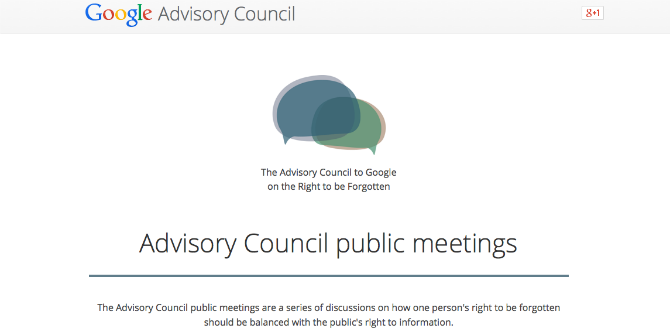 The upcoming World Radiocommunication Conference 2015 (WRC-15) has mobile network operators wrestling broadcasters for access to ultra-high frequency electromagnetic spectrum, but it’s not just industry actors that are struggling to reach a common position over the future allocation of the resource. Government regulators throughout the Americas are just as conflicted. LSE MSc student Ayden Fabien Férdeline suggests there needn’t be losers.
The upcoming World Radiocommunication Conference 2015 (WRC-15) has mobile network operators wrestling broadcasters for access to ultra-high frequency electromagnetic spectrum, but it’s not just industry actors that are struggling to reach a common position over the future allocation of the resource. Government regulators throughout the Americas are just as conflicted. LSE MSc student Ayden Fabien Férdeline suggests there needn’t be losers.
Mobile communication networks have transformed the Americas, fuelling economic growth and delivering invaluable social capital to the region. But there is a genuine need for more spectrum to improve communications infrastructure. This is evidenced by the fact that, relative to the member states of the European Union, nations in the Americas have allocated only modest amounts of their electromagnetic spectrum to wireless carriers. Research published in 2009 by George Mason University found that, “on average, Latin American countries allocate only 100 MHz … compared with a mean of about 266 MHz in the European Union.”
There could be many reasons for this. Maybe there just isn’t enough market demand to justify a higher allocation of spectrum, but given the Americas has more active mobile subscriptions than it does people, I’m inclined to think that regulatory authorities in the region are not optimally dividing up the resource. This is a view shared by industry, with the CEO of AT&T Mexico saying last week that it requires “flexible, growth-orientated policies” that will see more spectrum released to the market, if it is to continue investing in the country.
Spectrum is essential for both broadcasters and mobile operators. The FCC has said “the unique propagation characteristics of the [spectrum] bands below 1 GHz allow for wider area coverage which in turn requires less infrastructure and facilitates service delivery to rural or sparsely populated areas”, making it “exceptionally suited” for mobile communications. However, at present, the 470-862 MHz band of spectrum is allocated by global treaty for broadcasting purposes. Television broadcasting is important: nearly every resident in the Americas watches television at least once a week, it is used for the dissemination of information in emergencies, and it is used to achieve cultural objectives in many countries. But mobile and broadcasting can co-exist – indeed, the two services already do.
An inconvenient truth is that the existing global treaty governing this band of spectrum has fallen into disuse in some countries in the Americas (this is aided by the fact that the Geneva 2006 Frequency Assignment Plan allows for the sub-1 GHz band to be used in a “flexible” manner, so it is not suggested that the below countries are violating any treaties).
| Band (MHz) | By international treaty, this band of spectrum in the Americas is allocated primarily for… | But in practice, this band is used primarily for the provision of… |
| 470 – 512 | Broadcasting services. | Mobile services in Argentina, Canada, Chile, Colombia, Cuba, Ecuador, Guyana, Honduras, Jamaica, Mexico, Panama, Peru, and the United States. |
| 512 – 608 | Broadcasting services. | Mobile services in Canada, Costa Rica, Cuba, El Salvador, Guatemala, Guyana, Honduras, Jamaica, Mexico, and the United States. |
| 608 – 614 | Radio astronomy. | |
| 614 – 698 | Broadcasting services. | Mobile services in Canada, Chile, Colombia, Cuba, Guyana, Honduras, Jamaica, Mexico, Panama, Peru, and the United States. |
Note: Countries not listed in the third column are using the spectrum per its international allocation.
Countries examined: Antigua & Barbuda, Argentina, Bahamas, Brazil, Canada, Chile, Colombia, Costa Rica, Cuba, Dominican Republic, Ecuador, El Salvador, Grenada, Guatemala, Guyana, Haiti, Honduras, Jamaica, Mexico, Nicaragua, Panama, Paraguay, Peru, St Lucia, St Vincent and the Grenadines, Suriname, Trinidad & Tobago, the United States, Uruguay, Venezuela
No data available: Barbados, Belize, Bolivia, Dominica
What we can take away from this table is that television broadcasting and mobile services already live in unison. These services augment one another and respond to different market needs: mobile services make one-to-one communication possible, whereas terrestrial broadcasting transmits one-to-many, contributing to social cohesion policies, and sharing messages during emergencies.
Broadcasters can and already do use the upper 700 MHz band to distribute their content – but they should relinquish their use of the 470 – 698 MHz band, as the reach of this range for mobile communications is 20% higher than that of the upper band. In Bolivia for instance, where broadband penetration stands at 41%, this would mean that an additional 932,800 people would have access to high-speed wireless internet with no additional investment by wireless carriers. This would be transformative for people in rural regions of the Americas: it would improve the provision of public and private sector services (especially in the fields of health services, financial services, and educational resources). The completion of the switchover from analogue to digital terrestrial television is expected to free up the 470 – 698 MHz band of spectrum, and I encourage policy makers in the Americas to re-allocate it to mobile operators.
Reaping the benefits
There are quantifiable economic benefits to doing so, too. The increase in revenue generated by the service providers would increase tax contributions. Research conducted by Groupe Speciale Mobile America (GSMA), a worldwide consortium of 800 mobile operators, found that the tax contributions of its Latin American members would increase by US$2.8 billion per annum were they to be allocated their desired bands of spectrum. They would also need to hire between 11,000 and 36,000 new staff to support market growth. In addition, service provision costs would decline, as the 470 – 698 MHz band requires 6% less base stations than the 700 MHz band does, representing a saving of US$897 million between 2015 and 2020 which “would” be passed along to consumers.
Different countries in the Americas allocate their spectrum differently. Some nations (Brazil, Chile, Colombia, Costa Rica, Peru) impose specific coverage obligations on license holders; other nations (Argentina, Mexico) have spectrum ownership caps. Some allow for the trading of spectrum (Chile, Mexico, Uruguay, United States) or have developed incentive auctions for the buyback of under-utilised spectrum (United States). Other countries (Argentina, Brazil, Chile, Colombia, Peru, Uruguay, United States, Venezuela) have flexible-use policies and have ‘license-exempt’ rules in place that remove the red tape for some spectrum users.
What is clear here, is, that many nations in the Americas have tried different techniques to manage their spectrum. At WRC-15 this November, over 150 countries, including 20 from the Americas, will meet to revise a global treaty governing the use of this finite resource. WRC-15 agenda item 1.1, in particular, asks member states to “consider additional spectrum allocations to the mobile service on a primary basis and [for the] identification of additional frequency bands for International Mobile Telecommunications (IMT) and related regulatory provisions, to facilitate the development of terrestrial mobile broadband applications.” I encourage the delegates from the Americas to vote in favour of this motion, because an increase in the availability of spectrum for mobile networks will bring further economic growth and enhance the provision of public services.
What the regulators say
Argentina’s communications regulator seeks to allocate the 470-698 MHz band to mobile operators once the switch to digital terrestrial television has been completed (estimated to be by 2018). However, Presidential decree 2426/2012 says the country’s position at WRC-15 will be that this band of radio spectrum must be protected for broadcasting purposes.
Brazil seeks to guarantee the provision of a nation-wide broadcasting service while promoting digital inclusion in rural and remote areas.
Canada and Costa Rica would not oppose a co-primary allocation of the 470-698 MHz band to wireless carriers, but PolicyTracker reports that they would neither “propose [n]or express support for identification of IMT in the band 470-698 MHz.”
Colombia supports the use of lower frequency bands in order to provide broadband service to rural areas so to reduce the digital divide.
Mexico is in the process of digitising its television services, and has a preliminary view in support of re-allocating spectrum to mobile operators once this transition is complete.
The United States supports a co-primary allocation of the 470-698 MHz band to wireless carriers on a global basis, but says national governments should have the flexibility to maintain pre-existing allocations to broadcasters in the same frequency range.
This article gives the views of the author and does not represent the position of the LSE Media Policy Project blog, nor of the London School of Economics and Political Science.





